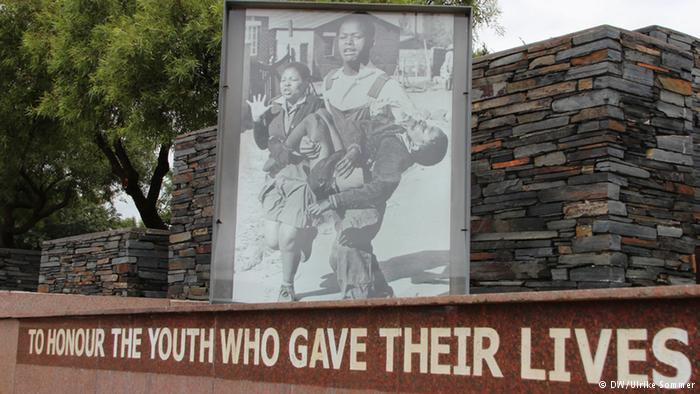South Africans are celebrating four decades since the1976 Soweto uprising. An estimated 176 school children were shot and killed by the apartheid regime for marching against the enforcement of Afrikaans in schools.
On a bright Wednesday morning, on June 16, 1976, hundreds of children in Soweto bid their usual farewell to their parents as they hurried to school. Little did they know that for hundreds for them, it would be the last time they said goodbye.
High school students started to encourage each other to take part in a protest march against the apartheid government’s decision to force schools to teach all subjects in Afrikaans. Most of the black population could not speak Afrikaans, which they saw as the language of the oppressor.
Murphy Morobe was one of the student leaders who spearheaded what was to become a historic march. He insists that the thousands of students who joined the protest wanted to communicate one simple message in a peaceful way. “Oppression of minorities is always exacerbated by the oppressors imposing their own language on an oppressed people,” he said. “For us, we felt that it was something that we had to react against.”
Police violence
But when they arrived at Vilakazi Street in Orlando West, one of Soweto’s townships, the apartheid police started shooting at them with live ammunition. Hundreds died in the unrest that lasted several days. There is, however, no agreement on the number of fatalities. Some maintain it was as high as 600.
Seth Mazibuko, who was only 16 years old when he participated in the 1976 march, says they the protestors were shocked by the actions of the police on that fateful day. “We never measured the magnitude of the attack on us as big as even having to kill children,” he said.
A shocking image
Among the first to be killed was 13-year old Hector Pieterson. The photograph of a local boy carrying his body, with Pieterson’s sister at his side, sparked international outrage when it was printed in newspapers around the world the following day.
Sam Nzima, the photographer accredited with taking the famous picture, still remembers how a young looking white police officer set the tragedy in motion. “He pulled out his gun and shot directly into the crowd. He ordered police to shoot, so all hell was let loose,” Nzima said. “Police were just shooting at random. I saw a little boy fall down.”
As with all struggles, the students’ protest left painful permanent scars on many families. Antoinette Sithole, Hector Pieterson’s sister, was with him when he was shot. “I looked at my brother, I saw blood coming from the side of the mouth. I panicked,” she said. Antoinette was running alongside the boy carrying Hector, but she didn’t know him at the time. “As that man was about to put my brother in the car he said ‘Oh! He is dead,'” she remembers. “Hearing that, l was sort of torn into two, crying in desperation.”
Lost hero
The local boy, trying to rush Hector into a car so he could be taken to hospital, was Mbuyisa Makhubu. Local tour guide Poloko Nthako says Makhubu’s family struggled to come to terms with the incident. It’s thought Makhubu fled South Africa for Botswana, before travelling to Nigeria where he had receieved a scholarship. “When he get to Nigeria he disappeared,” Nthako says. “Until today we are still asking whether Mbuyisa Makhubu is alive or not.”
After the massacre, hundreds of youth went into exile and took up arms to fight for the freedom which finally arrived in 1994.
Lasting change?
Many Soweto residents today still salute the youth of 1976 for their contribution to today’s South Africa. “There are no longer separate spaces for white and black people,” said Oupa Moloto, one of the students who marched in the uprising, who is now a coordinator of the June 1976 Foundation Project in Soweto. He says South Africa and Soweto in particular are better places today because of the sacrifice made by the youth of 1976. “We carry the same ID, we have got covered roads. When we were growing up there were no covered roads. When we played football, we were just playing football around the dust,” he told DW.
However, many say that although the sacrifice of the young people helped bring about political freedom, South Africans are still far from achieving educational equality. “Even if now there is no law that prohibits black students form attending whatever institution of leaning they would want to, there is the economic reality that they cannot actually afford to pay for education,” says Ralph Mathekga an independent political analyst based in Johannesburg.

